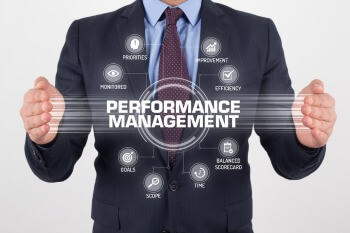Get a Complimentary Workforce Realignment Feedback Session
What is your 30-day workforce management plan?
As you start to plan for the weeks and months ahead, we would like to help by offering a complimentary Workforce Realignment Feedback Session with our HCM Analytics team.
During this session, our HCM Analytics team will:
- Discuss your current plans for workforce changes to manage the next 30 to 90 days and provide feedback on potential risks and opportunities
- Identify targeted areas where you could potentially reduce your labor costs while minimizing long-term damage
- Suggest key metrics for you to track so you can forecast labor costs better and make earlier interventions
Request your complimentary Workforce Realignment Feedback Session with our HCM Analytics Team.
A Guide to Workforce Management Solutions

Contents:
- What Is Workforce Management
- Workforce Management Definition
- Workforce Scheduling
- Workforce Performance Management
- Workforce Planning and Forecasting
- Workforce Optimization
- Types of Workers that Benefit from Workforce Management
- Contingent Workforce Management
- Field Service Workforce Management
- Mobile Workforce Management
- Workforce Management Trends
- Workforce Management Technology & Software
- Workforce Management Metrics
- Workforce Management Best Practices
What Is Workforce Management
Workforce management is much more than setting schedules. It is an art and a science that, with the correct technology, processes, and procedures, allows you to effectively manage your workforce to achieve lower labor costs and optimal performance.
Workforce Management Definition
Workforce management can be defined as an integrated set of processes utilized by a business or institution to optimize employee productivity on an individual and an entity-wide basis. It involves quantifying the types and amount of labor necessary to accomplish specific jobs on an hourly and daily basis.

Workforce Scheduling
After hiring the right talent, workforce scheduling plays an important role in maximizing resources. The objective is to have the right number of workers with the right skills at the right times. Scheduling a multifaceted workforce can be time-consuming, prone to error, and frustrating. Having the right workforce management software can help you reduce labor costs, and stay in control of your workforce and remain in compliance with labor laws.
Workforce Performance Management

The main components of workforce performance management are:
- Performance planning
- Performance observation and review
- Performance appraisal
- Employee development
It is about aligning the objectives of the organization with employee skills, competency requirements, development, and delivery of results. The emphasis in performance management is on learning, improvement, and development to create a high-performance workforce and achieve your overall business strategy.
Workforce Planning and Forecasting
Many organizations struggle to balance supply and demand in the workforce. Strategic workforce planning and forecasting involves placing the right people with the right skills in the right time and place to achieve the short and long-term objectives of the organization. It is an important part of the business planning process and must be linked to your strategic business goals.
Workforce Optimization

Workforce optimization is a business strategy supported by integrated technologies, cross-functional processes, and shared objectives, focused on maximum performance with minimal operational costs. It supports business by providing key data on workforce performance and is a vital step in analyzing and managing workers and operational efficiency.

Types of Workers that Benefit from Workforce Management
With the changing workforce, many businesses today can benefit from workforce management. Effective forecasting, staffing, scheduling, and real-time adjustments can help any organization run more efficiently.
Contingent Workforce Management

A contingent workforce is a pool of workers hired on an on-demand basis. It consists of contract workers, freelancers, and consultants who are not full-time employees. Contingent workers are added to the workforce on an ad-hoc basis and may work either remotely or onsite. Software solutions are available today to automate contingent worker onboarding, work, and payment to increase efficiency and reduce costs.
Field Service Workforce Management

Field service workforce management involves optimizing the use of workers, vehicles, and equipment. It can help you organize and grow a mobile business by providing:
- Greater awareness of costs, resources, and job requirements to facilitate job scheduling
- Real-time visibility into your entire workforce to improve strategy
- Data that helps you determine the best sequence in which to complete work orders
The right field service management software can help you speed up cash flow, track jobs and income, schedule last-minute or emergency jobs, highlight the most profitable parts of your business, capture all the information you need, and automate accounting.

Mobile Workforce Management

Different types of companies with mobile employees need mobile workforce management solutions. This may involve tracking, logging, dispatching, and managing productivity. It may also include procurement, management, and deployment of mobile devices, software, and mobile apps.
Workforce Management Trends
Top trends in workforce management for 2018 include:
- Treating employee engagement as a financial strategy and thinking creatively about the employee experience.
- Providing accessible, applicable data for employees in the workplace.
- Focus on the human side of leadership
Workforce Management Technology & Software
Having the right technology and software is an integral part of effective workforce management. The goal of workforce management software is to gain visibility into business metrics and to perform core functions, including:
- Labor scheduling
- Time and work data collection
- Leave management
- Task and activity management
A state-of-the-art workforce management system should offer features such as:
- Flexible pay rules
- Budgets and job costing
- Reporting and labor analytics
- Wage and hour compliance
- Employee scheduling
- Employee points and tracking
- Mobile time management
- Affordable care toolkit
Workforce Management Metrics

Metrics are essential to maximizing workforce performance. Key metrics to track for optimal workforce management include:
- Productivity: How much is your workforce getting done?
- Retention: As turnover is costly to an organization, closely tracking retention and attrition rates is essential to workforce management.
- Revenue per employee: Simply divide total revenue by total number of employees to help determine profitability and how much employees contribute to the bottom line of the business.
- Total workforce cost: This is the sum of all worker-related costs, including compensation, benefits, and other expenses.
- Effectiveness ratio: This metric is determined by calculating how much gross profit the company gets for every dollar of salary paid for full-time employees and contingent workers.

Workforce Management Best Practices
Quality workforce management systems and tools can make a significant difference in how well your organization runs. To make the most of workforce management solutions, the following best practices are recommended:
- Require ongoing workforce management training to avoid knowledge erosion.
- Refine the data gathering process to ensure the numbers are accurate.
- Set realistic schedule adherence targets and use real-time calculations to achieve them.
- Allow the system to manage holiday and shift swaps to save manager time.
- Invite employees to input schedule and vacation requests directly into the system.
- Perform midrange and long-term calculations as well as daily forecasts.